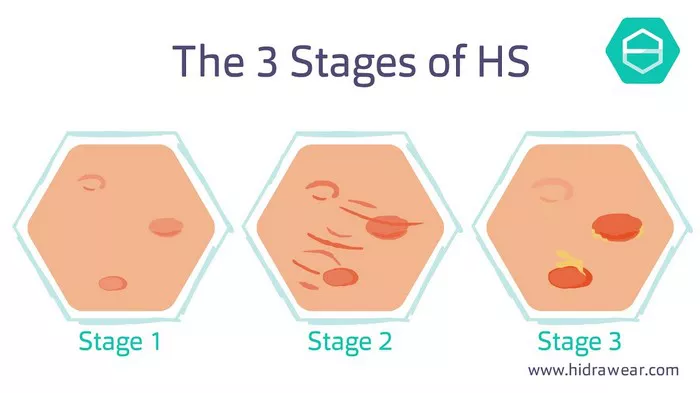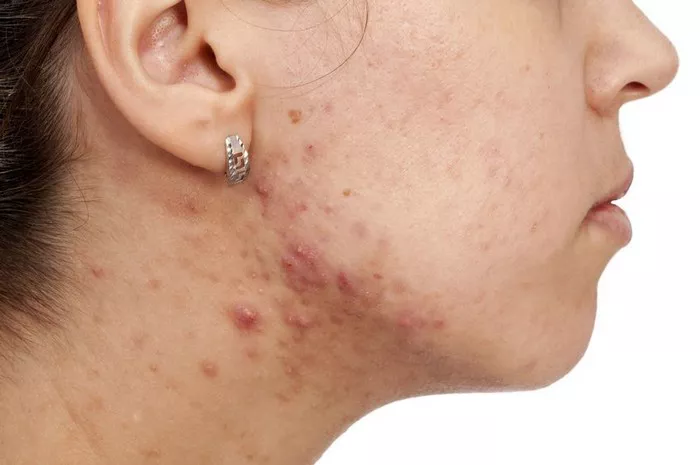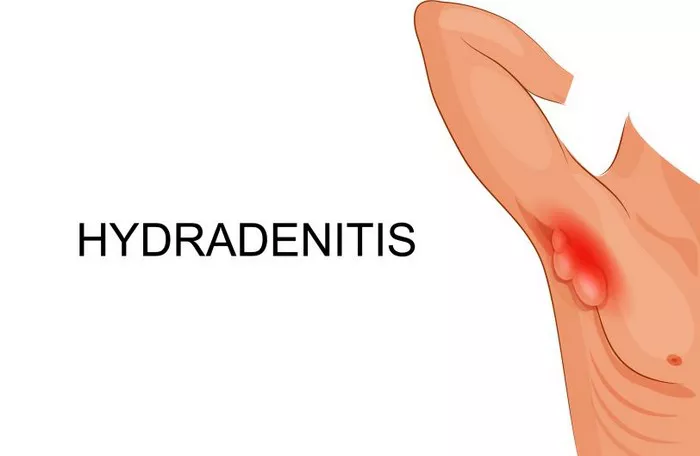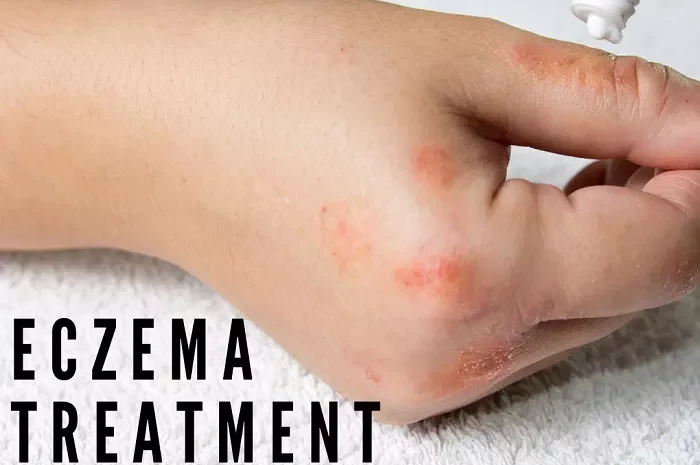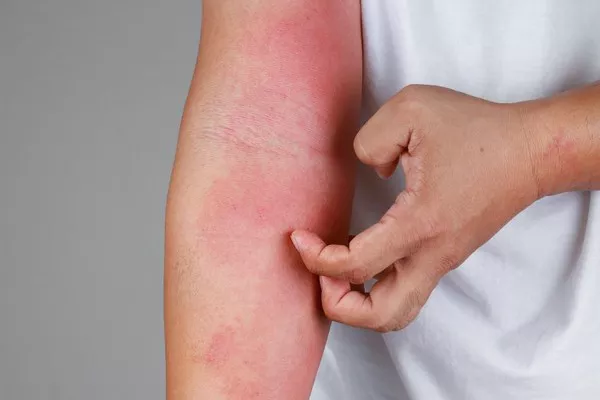Hidradenitis suppurativa (HS) is a chronic skin condition that affects the sweat glands, leading to painful lumps, abscesses, and tunnels under the skin. It most commonly appears in areas where skin rubs together, like the armpits, groin, under the breasts, and around the buttocks. If you are struggling with HS, it’s important to understand how to manage and reduce flare-ups. In this article, we will explore various treatment options, lifestyle changes, and tips to help you get rid of or manage the symptoms of hidradenitis suppurativa.
What is Hidradenitis Suppurativa?
Hidradenitis suppurativa is an inflammatory skin disease that primarily affects the hair follicles and sweat glands. It occurs when hair follicles become clogged with oil, sweat, and bacteria, leading to painful lumps, abscesses, and tunnels under the skin. Over time, these lumps can rupture, causing further infection and scarring. HS is often mistaken for acne or ingrown hairs but requires different care and treatment.
While the exact cause is not fully understood, genetics, immune system dysfunction, and lifestyle factors such as obesity and smoking are known to contribute to the development and progression of HS.
Understanding the Symptoms of Hidradenitis Suppurativa
Before discussing how to get rid of hidradenitis suppurativa, it’s essential to know what the symptoms look like. HS typically presents as:
- Painful lumps or bumps under the skin.
- Abscesses that may drain pus or blood.
- Foul-smelling discharge.
- Tunnel-like openings under the skin, known as fistulas.
- Scarring and skin changes over time.
If you notice any of these symptoms, it’s important to see a healthcare professional for proper diagnosis and treatment.
Lifestyle Changes to Manage Hidradenitis Suppurativa
Managing HS often starts with making changes to your daily habits. These lifestyle adjustments can help reduce flare-ups, manage symptoms, and prevent new outbreaks from occurring.
Maintain a Healthy Weight
Obesity is a significant risk factor for hidradenitis suppurativa. Excess weight can cause friction and sweating, both of which contribute to flare-ups. Losing weight can help reduce the severity and frequency of HS symptoms. Try incorporating regular exercise and a healthy diet into your routine to manage your weight effectively.
Avoid Tight Clothing
Tight-fitting clothing can cause friction, which irritates the skin and exacerbates HS. Opt for loose-fitting clothes made from breathable fabrics like cotton. This will help reduce sweat buildup and reduce friction in areas prone to flare-ups.
Quit Smoking
Smoking is one of the most well-known risk factors for hidradenitis suppurativa. Studies have shown that smokers are more likely to develop HS, and their symptoms tend to be more severe. Quitting smoking can significantly improve your skin health and may even reduce the number of flare-ups.
Manage Sweat
Sweat can worsen the symptoms of HS, especially in areas where skin rubs together. Try to stay cool and dry by using absorbent powders, wearing moisture-wicking clothing, and showering immediately after physical activity. Using antiperspirants in areas prone to sweating can also help reduce flare-ups.
Keep Skin Clean and Dry
Proper hygiene is essential in managing hidradenitis suppurativa. Regularly wash affected areas with mild soap and water. Afterward, gently pat the skin dry with a clean towel. Avoid rubbing or scrubbing the skin, as this can cause irritation and worsen symptoms. Keeping the skin dry can also prevent the buildup of sweat and bacteria, which contribute to flare-ups.
Treatment Options for Hidradenitis Suppurativa
In addition to lifestyle changes, several medical treatments can help manage hidradenitis suppurativa and reduce flare-ups. These treatments range from topical creams and medications to more invasive procedures. Your healthcare provider will help you determine the best course of action based on the severity of your condition.
Topical Treatments
For mild cases of HS, topical treatments may be effective in reducing inflammation and preventing flare-ups. Over-the-counter antibiotics like clindamycin can be applied directly to the affected areas to help reduce bacteria and infection. In some cases, topical steroids may also be prescribed to reduce inflammation and promote healing.
Oral Antibiotics
Oral antibiotics are commonly used to treat more moderate cases of hidradenitis suppurativa. Antibiotics like tetracycline, doxycycline, or clindamycin can help reduce bacteria, control inflammation, and prevent new abscesses from forming. Your doctor may prescribe a long-term course of antibiotics if you experience frequent flare-ups.
Hormonal Therapy
For women, hormonal therapy may be an effective treatment option, especially if HS flare-ups are linked to the menstrual cycle. Birth control pills, spironolactone, or other hormone treatments may help regulate hormones and reduce the frequency of flare-ups. Hormonal therapy works by balancing hormones that can contribute to the clogging of hair follicles and sweat glands.
Biologics
For severe cases of hidradenitis suppurativa, biologic medications like Humira (adalimumab) or Remicade (infliximab) may be prescribed. These medications target the immune system and help reduce inflammation, preventing the development of new lesions and abscesses. Biologics are typically used for patients with moderate to severe HS that does not respond well to other treatments.
Surgical Treatments
In some cases, surgery may be necessary to manage hidradenitis suppurativa, especially if there is significant scarring or the formation of tunnels (fistulas) under the skin. Surgical options include:
Incision and drainage: This procedure involves draining the abscesses to relieve pain and pressure. However, this is a temporary solution and may not prevent future flare-ups.
Laser therapy: Laser treatments can help reduce the size of lesions and promote healing by targeting and destroying abnormal tissue.
Excision: In more severe cases, surgical excision may be performed to remove the affected skin and prevent the spread of the disease. This is typically considered when other treatments have not been effective.
Pain Management
Hidradenitis suppurativa can be extremely painful, especially during flare-ups. Managing pain is an important part of treatment. Over-the-counter pain relievers like ibuprofen or acetaminophen can help reduce inflammation and alleviate discomfort. In severe cases, your doctor may prescribe stronger pain medications.
Alternative Therapies
Some individuals with HS find relief from alternative therapies, although these should be used in conjunction with conventional treatments. These may include:
Warm compresses: Applying warm compresses to affected areas can help relieve pain and reduce swelling.
Tea tree oil: This natural antimicrobial agent may help reduce inflammation and prevent infection.
Turmeric: Known for its anti-inflammatory properties, turmeric can be used in oral supplements or topically to help reduce swelling and redness.
Preventing Future Flare-Ups
Once you have successfully managed a flare-up, it’s essential to take steps to prevent future outbreaks. The following tips can help reduce the risk of flare-ups:
Continue with lifestyle changes: Maintain a healthy weight, avoid smoking, and keep your skin clean and dry.
Follow your doctor’s treatment plan: Adhere to any prescribed medications or therapies to prevent future flare-ups.
Use gentle skincare products: Avoid harsh scrubs or chemicals that can irritate the skin. Stick to mild, non-comedogenic products.
Monitor for early signs: Be aware of the early signs of HS flare-ups, such as pain or redness in affected areas. Catching a flare-up early can help prevent it from becoming severe.
When to Seek Medical Help
If your symptoms of hidradenitis suppurativa do not improve with lifestyle changes and over-the-counter treatments, or if your condition worsens, it’s important to see a healthcare provider. They may recommend additional tests or refer you to a dermatologist or specialist who can provide more advanced treatment options.
Conclusion
While there is no permanent cure for hidradenitis suppurativa, effective management is possible. By making lifestyle changes, following a treatment plan, and seeking professional help, you can reduce flare-ups and improve the quality of your skin health. Whether you are using topical treatments, oral medications, or surgical procedures, the key is to work with your healthcare provider to find a plan that works for you.
Remember, hidradenitis suppurativa is a chronic condition, but with the right approach, you can manage it effectively and lead a healthy, active life.
Related topics:





